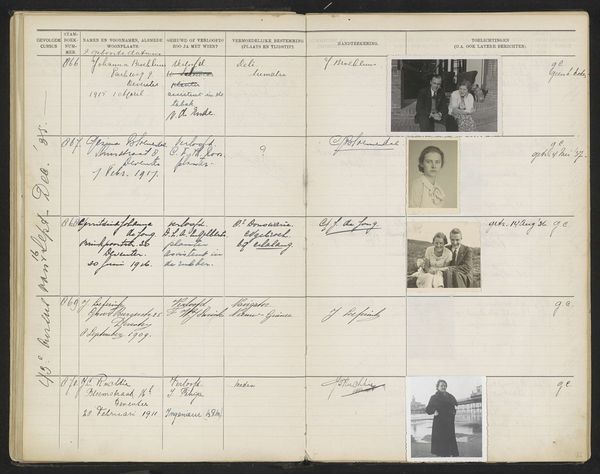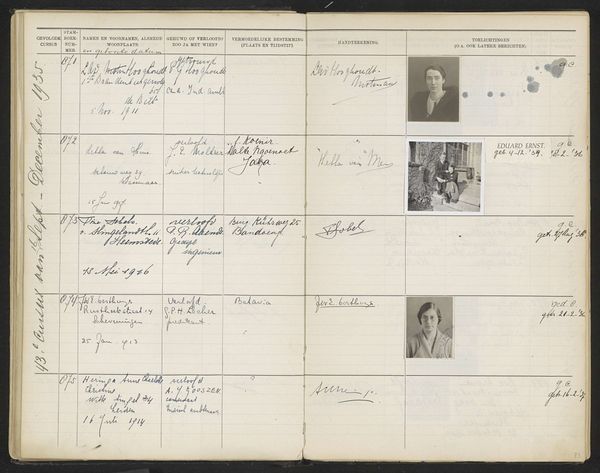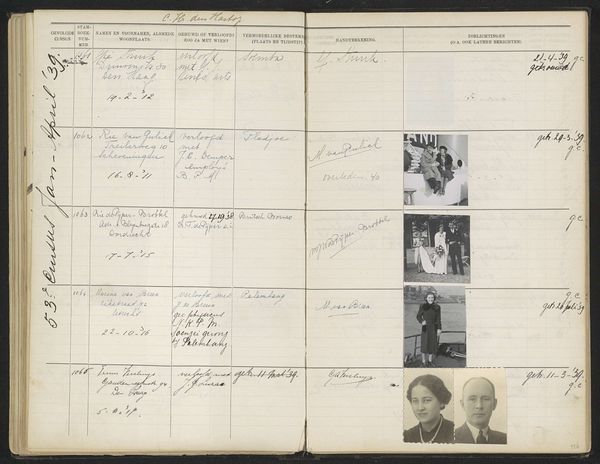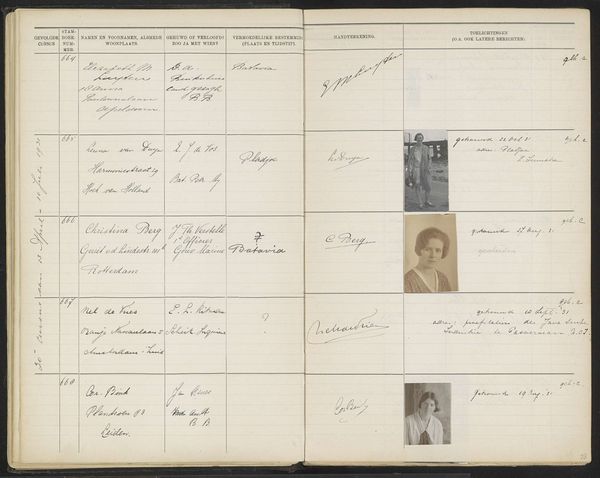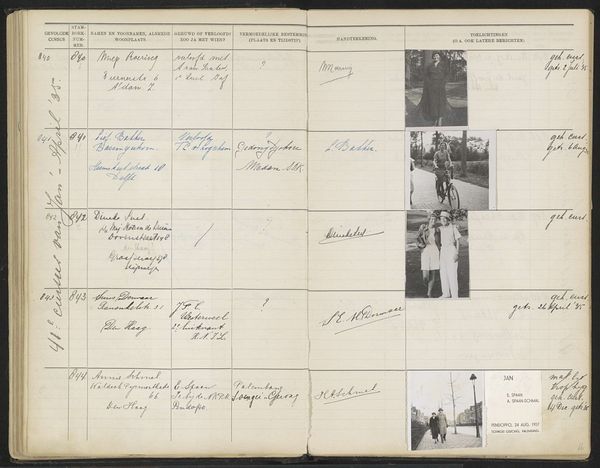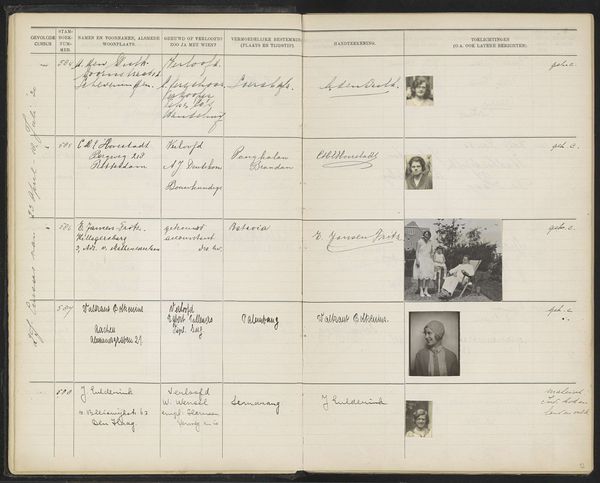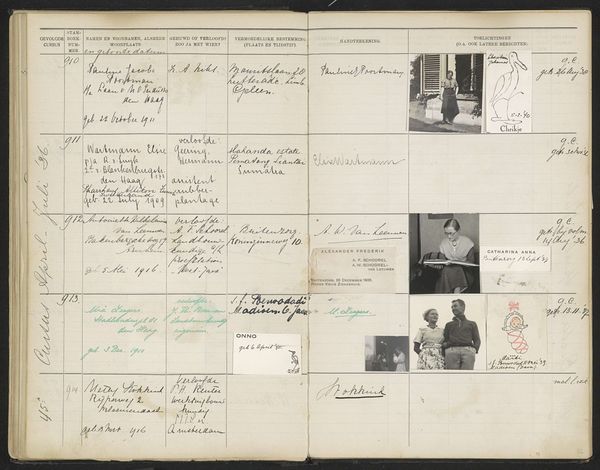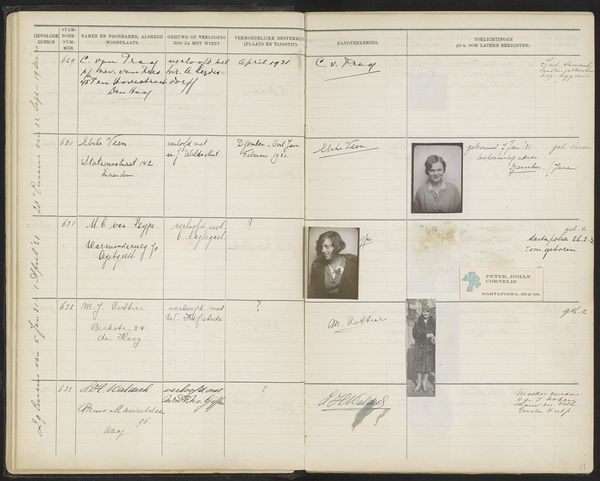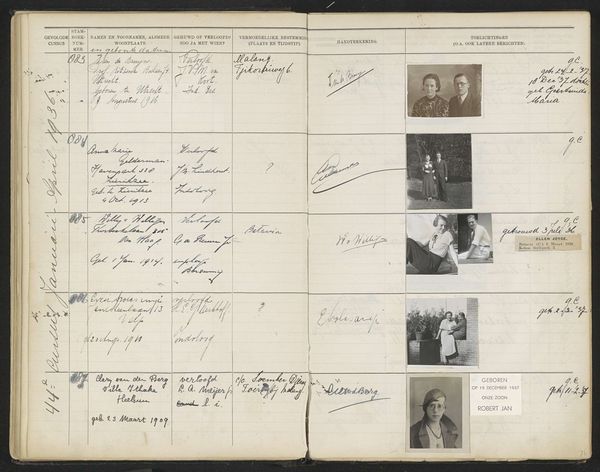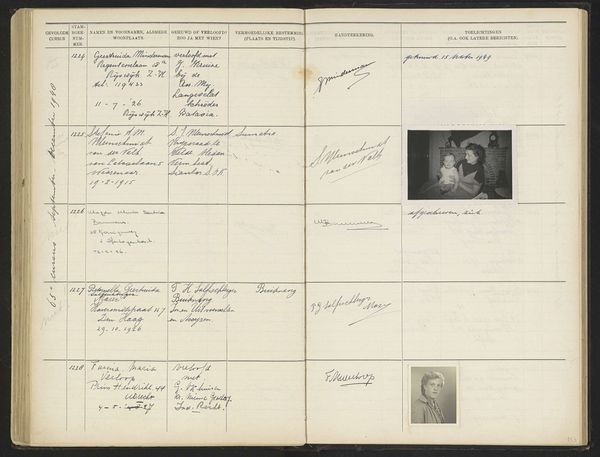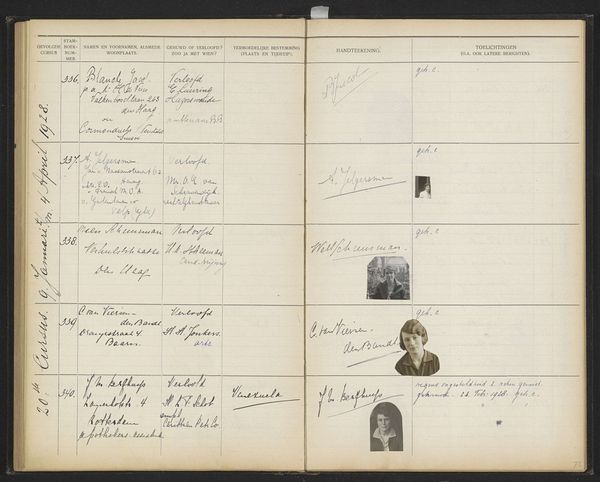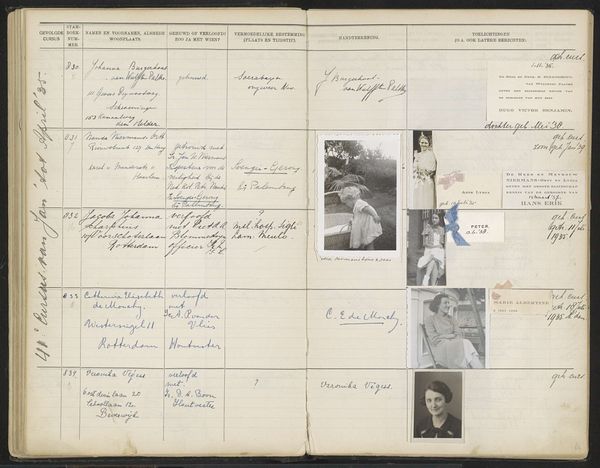
Blad 36 uit Stamboek van de leerlingen der Koloniale School voor Meisjes en Vrouwen te 's-Gravenhage deel II (1930-1949) Possibly 1931 - 1939
0:00
0:00
paper, photography
#
portrait
#
paper
#
photography
Dimensions: height 337 mm, width 435 mm
Copyright: Rijks Museum: Open Domain
Curator: Let's look at "Blad 36 uit Stamboek van de leerlingen der Koloniale School voor Meisjes en Vrouwen te 's-Gravenhage deel II (1930-1949)", a ledger page likely dating from the 1930s, containing photographs on paper. The ledger documents students from a Dutch Colonial School. What's your initial impression? Editor: My immediate thought is that it reads like a photographic family tree, although it is presented in an orderly and rigid manner. I notice recurring visual themes – certain poses or symbolic backdrops used again and again, perhaps to portray specific societal values of women at the time. Curator: I'm drawn to the book itself, this artifact holding information about this historical cohort of women, whose paths would lead from this institution in the Netherlands to locations all over the Dutch Colonial world. The material choices -- paper and photographic emulsion tell a story about access and limitations of early photographic technologies. Editor: True, and the use of photography is fascinating. It's meant to represent an individual, yet it also signifies broader aspirations. The outdoor settings—fields, or stylish patios—do these landscapes function as symbols of the life these young women aspire to, a new beginning in foreign lands, carefully composed within the social expectations of that time? Curator: The means of production—photography and print—allowed for efficient cataloging. I think also about labor in the image. Someone printed this page, someone glued in these small photographic portraits and larger format photographs: those acts of repetitive manual labor offer another layer of connection to this ledger book. Editor: The handwriting too—all the information meticulously handwritten; and yet there are absences. The uncertainty suggested by the single question mark. They seem almost louder in their symbolic weight. Curator: Indeed. Looking closely, we notice the systematic classification; even something like personal identity becomes part of a larger, standardized process of colonial administration, all visible in its construction and in the distribution of material traces. Editor: Ultimately, though, I am captivated by how potent the use of symbols makes each image – a window not just into a person's life, but into a whole network of colonial dreams and desires. Curator: And for me, it’s precisely this close look at the materiality of this object—the physical ledger, the pasted-in photos, the script—that grounds those grander dreams in the practical work of running an empire.
Comments
No comments
Be the first to comment and join the conversation on the ultimate creative platform.
